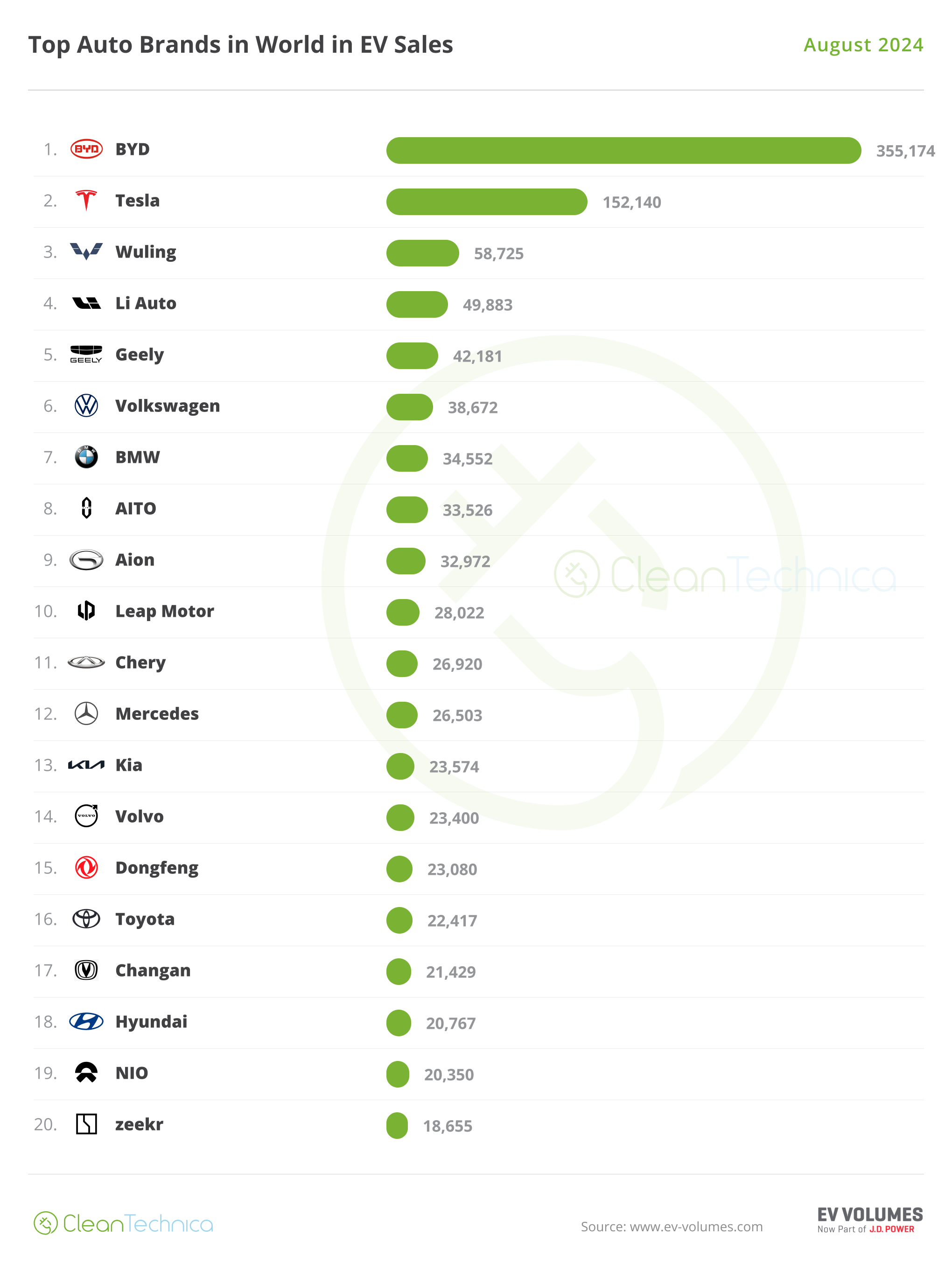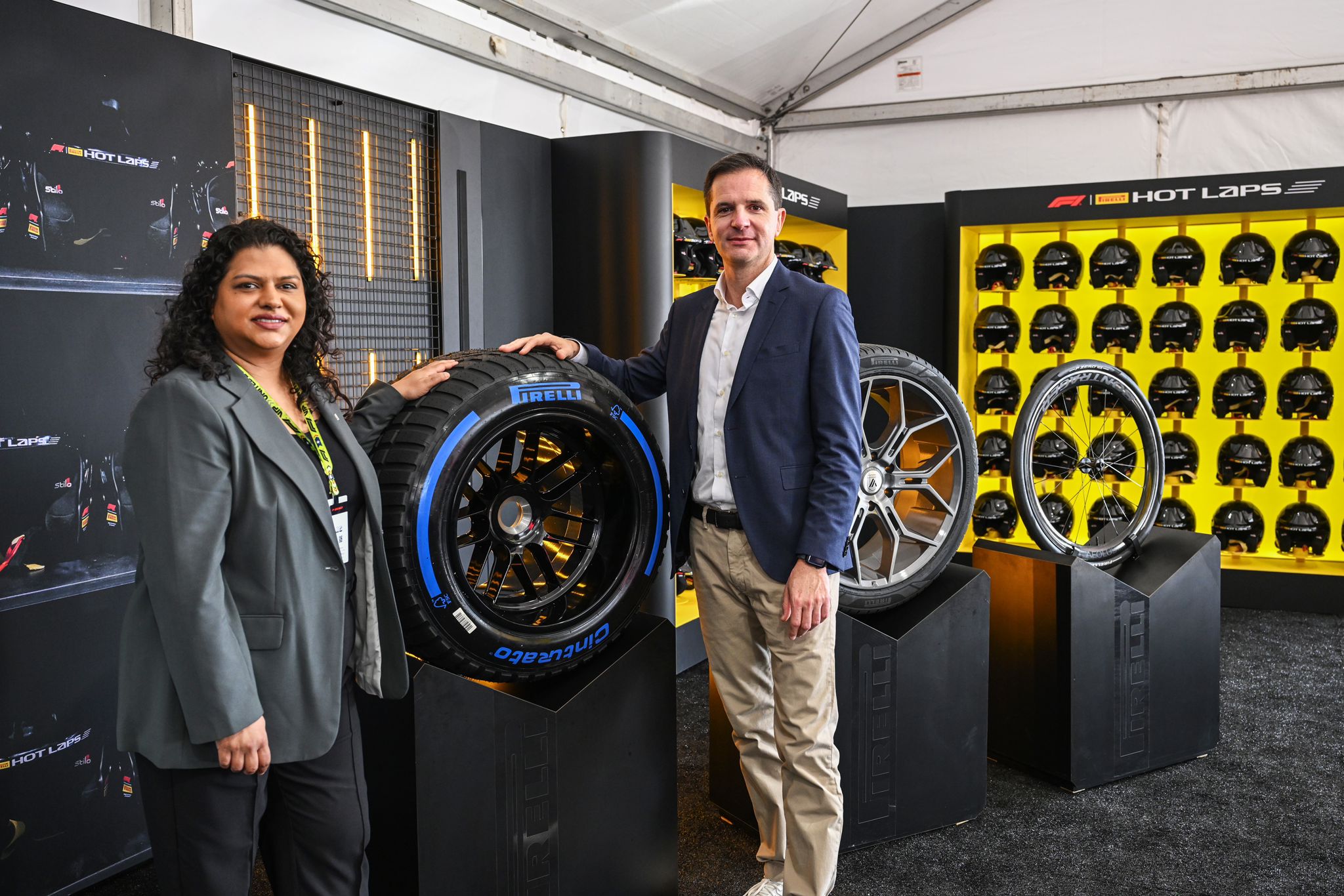Support CleanTechnica’s work through a Substack subscription or on Stripe.
August saw plugin EVs take 59.0% share in Sweden, up from 56.0% year-on-year. BEV share fell YoY, while PHEV share increased. Overall auto volume was 20,168 units, up 6% YoY. The Volvo EX40 was the best-selling BEV in August.
August’s auto sales saw combined plugin EVs take 59.0% share in Sweden, with full battery-electrics (BEVs) at 33.6% and plugin hybrids (PHEVs) at 25.5%. These shares compare YoY against 56.0% combined, 35.7% BEV and 20.3% PHEV.
Stepping back to look at 2025 cumulative year-to-date results, combined plugins now stand at 61.1% (35.0% BEVs), compared to 2024 YTD figures of 55.7% (32.4% BEV), and 2023 figures of 58.5% (37.8% BEV). In short, while there has been a partial recovery from 2024’s weakness, Sweden’s transition is still barely changed from where it was 2 years ago. PHEVs have increased their share, but — more importantly — BEVs have lost share.
The below chart gives a visual representation of BEVs’ recent negative trajectory. The transition has become an embarrassment, especially when compared to Sweden’s rapid pace of progress in 2020 and 2021.
Best-Selling BEV Models
The Volvo EX40 was once again the best-selling BEV in August, its fifth time in the top spot this year, with 493 units sold.
The Volkswagen ID.7 was close behind, with 441 units delivered, just ahead of the Kia EV3, with 431 units delivered.
There were few notable performances in the top 20, apart from expected variance due to the batch logistics for certain models.
Stepping back, the Kia EV3 has done very well since its launch in late 2024, and is now a regular member of the top 5, and, increasingly, the top 3. Similarly, the Volvo EX90, also launched in late 2024, is now regularly ranking around the 10th spot, a great result given its premium pricing.
A couple of other models peaked early after debuting and have now settled back to slightly lower volume (though still decent). These include the likes of the Porsche Macan, the Audi Q6 (both now typically outside the top 20), and, more recently, perhaps the Audi A6 (though it’s still too early to tell whether the A6 has peaked).
A more recent bright spot has been the progress of the Renault 5, which stood in 13th spot in August (from 10th in July), and is now consistently seeing over 150 units per month and appearing regularly in the middle ranks.
The R5’s progress contrasts with that of its other B-segment competitors. The Hyundai Inster is still seeing low volumes in Sweden (around 10 units per month) since launching in February. Likewise, the Citroën e-C3 is faring similarly, with around 15 units per month recently. The Renault 4 has still only seen showroom volumes for now, but may have a chance to do well once it gets proper allocation.
There were several BEV debutants in August. The Hyundai Ioniq 9 arrived (36 units) and will compete with other large 3-row models, the Kia EV9, the VW ID. Buzz, and the current leader, the Volvo EX90.
Speaking of which, the EX90’s new sibling, the Volvo ES90, debuted in August with 22 units. This is a premium large sedan-coupe (5,000 mm in length), shares its platform with the EX90, and starts from 929,000 SEK (€84,300). At this price point, the ES90 may see an initial surge (from those with deep pockets who have been waiting for just this kind of vehicle), but will then likely settle back to modest volumes.
A more important debutant was the new Mercedes CLA, which registered 30 initial units. These may have been mostly dealership units, although the car is now available to order on the Mercedes website, with indicated delivery dates from September onwards.
The Mercedes CLA is a D-segment sedan (4,723 mm), starting from 633,000 SEK (€57,400) in Sweden. It’s also the first model featuring Mercedes’ new generation of BEV powertrains, with great efficiency (800V and low drag), class-leading range (over 700 km WLTP in some configurations), and pretty fast charging (320 kW peak). On paper, this should be a faster road-trip vehicle than the Tesla Model 3, albeit more expensive. Let’s see how it gets on.
Now’s time to check up on the longer-term rankings:
Here, the competition between the Volvo EX40 and the Volkswagen ID.7 remains tight, with just 4% difference in volume separating them. They have swapped positions since the prior 3-month period.
The remaining members of the top 10 are exactly the same as 3 months prior, with some minor shuffling of positions. The Kia EV3 has climbed two spots, now in 4th, and the Polestar 4 has recently climbed three spots, now in 5th.
With two record-volume months, the Volvo EX90 has now climbed to 15th, from 24th in the prior period. Likewise, the Renault 5 has climbed to 17th, from 33rd previously. Both should have a little further to climb before they find their sweet spot.
In the coming couple of months we may see the Cupra Tavascan enter the top 20 (now in 21st), and later perhaps the Zeekr 7x (now in 27th).
Outlook
When will Sweden — once one of the two leading markets of the EV transition — get back to BEV growth?
The macroeconomy is moderate, with Q2 2025 recording 1.4% YoY GDP growth, up from 0.6% in Q1. Headline inflation increased to 1.1% and interest rates are steady at 2%. Manufacturing PMI improved to 55.3 points in August, from 54.4 in July.
What are your thoughts on Sweden’s EV transition? What will it take to turn around diminishing BEV sales and get back to a growth trend? Please share your perspective and thoughts in the discussion below.
Sign up for CleanTechnica’s Weekly Substack for Zach and Scott’s in-depth analyses and high level summaries, sign up for our daily newsletter, and follow us on Google News!
Have a tip for CleanTechnica? Want to advertise? Want to suggest a guest for our CleanTech Talk podcast? Contact us here.
Sign up for our daily newsletter for 15 new cleantech stories a day. Or sign up for our weekly one on top stories of the week if daily is too frequent.
CleanTechnica uses affiliate links. See our policy here.
CleanTechnica’s Comment Policy








